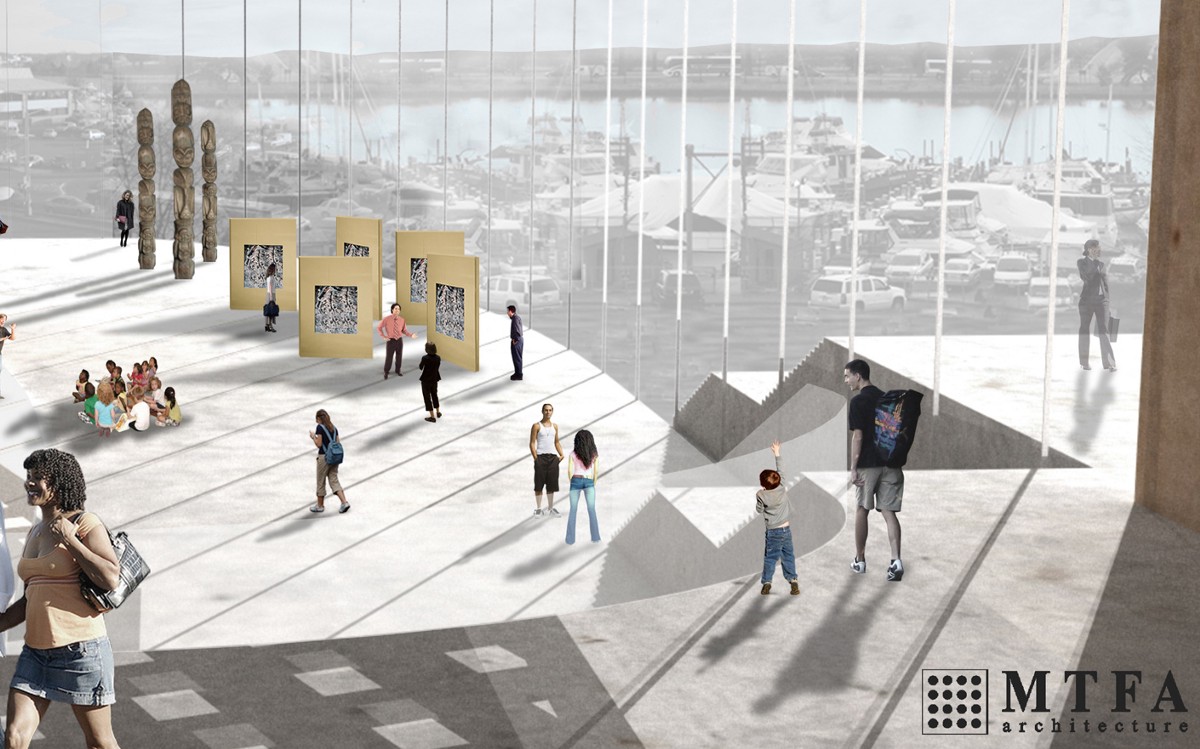
There are only a handful great story-telling museums in the world and Washington, DC has two of them.
While all museums claim that they tell a story, only a few do so in the conventional use of the term. In a true story-telling museum the visitor is on a chronological path that tells a story with a beginning, a middle and an end.
The United States Holocaust Memorial Museum which opened in 1993 was one of the first … and the best … until the National Museum of African American History and Culture opened September 2016. Both the USHMM and the NMAAHC shared one crucial ingredient, the great museum exhibition designer Ralph Appelbaum.
MTFA Architecture of Arlington, Virginia developed a vision of what the National Museum of the American People could look like.
In the case of the Holocaust Museum, it’s director Shaike Weinberg did one simple and very brilliant thing. He teamed Appelbaum with a British documentary filmmaker, Martin Smith, who had made documentaries about a variety of World War II subjects. He was the perfect choice to address the huge task of presenting the Holocaust to a diverse audience. With Smith in charge of designing the flow of the permanent exhibition, that’s why when visitors walk through the Holocaust Museum it is like walking through a documentary film of that period from 1932 through 1945 and the aftermath.
Smith and Appelbaum worked so closely together that at presentations when the exhibition design was underway, each would often finish the other’s sentences. They took the history of the Holocaust from a range of scholars and witnesses and weaved a path through that history for the museum’s 40 million visitors (and counting).
A similar creative process was used more than 20 years later to tell the 500-year history of African Americans. The director of that museum, Lonnie Bunch, is a historian and quintessential story-teller.
Now it’s time for a third story-telling museum to be built in our nation’s capital, the National Museum of the American People.
The story about the making of the American People in the NMAP would use the same processes that made those two other great institutions. A premier museum exhibition designer teamed with a great filmmaker to tell about the 20,000-year history of the making of the American People based on the work of a vast range of great scholars.
In the case of the Holocaust and African American museums, the architects worked collaboratively with the exhibition designer, both inside and out, reflecting and amplifying the story-telling process. For example, both museums include a railcar to help tell their stories, the architects made special provisions for them and in both cases the railcars were placed in the museum during construction and the rest of the museum was built around them. The effectiveness of this approach can be seen in two symbiotic ways, the number of of visitors and the visitor experience.
At most museums, whether they focus on art, history or science, an average visit is around an hour and a half. The United States Holocaust Memorial Museum has found that its average visitor stay is closer to three hours going through its permanent exhibition with many spending five or more hours. The same has turned out to be true at the National Museum of African American History and Culture as well. In both cases the visitors are caught up in the incredible story being told and the way that it is told. They are literally walking through those compelling histories.
In the past, museums were centered on collections and designed their exhibitions around them. The collections dictated the content. But at the USHMM and the NMAAHC, the museums sought out artifacts from around the nation and from around the world to help them tell their stories. It was the stories that dictated the content with the artifacts bringing the story to life.
The effectiveness of this approach is also seen in the word-of-mouth generated by visitors to true story-telling museums. In the case of the USHMM, they instituted timed-tickets when the museum opened 25 years ago in April, 1993 but assumed they wouldn’t need them after that first summer. A quarter century later it still generates large numbers of visitors and timed tickets are still needed to control the flow through the museum. The NMAAHC shares that same popularity.
The next series of blogs will summarize the story that the NMAP will tell and prospective museum visitors can envision walking through that history where every American will see some part of their story along the way.
This blog is about the proposed National Museum of the American People which is about the making of the American People. The blog will be reporting regularly on a host of NMAP topics, American ethnic group histories, related museums, scholarship centered on the museum’s focus, relevant census and other demographic data, and pertinent political issues. The museum is a work in progress and we welcome thoughtful suggestions.
— Sam Eskenazi, Director, Coalition for the National Museum of the American People
